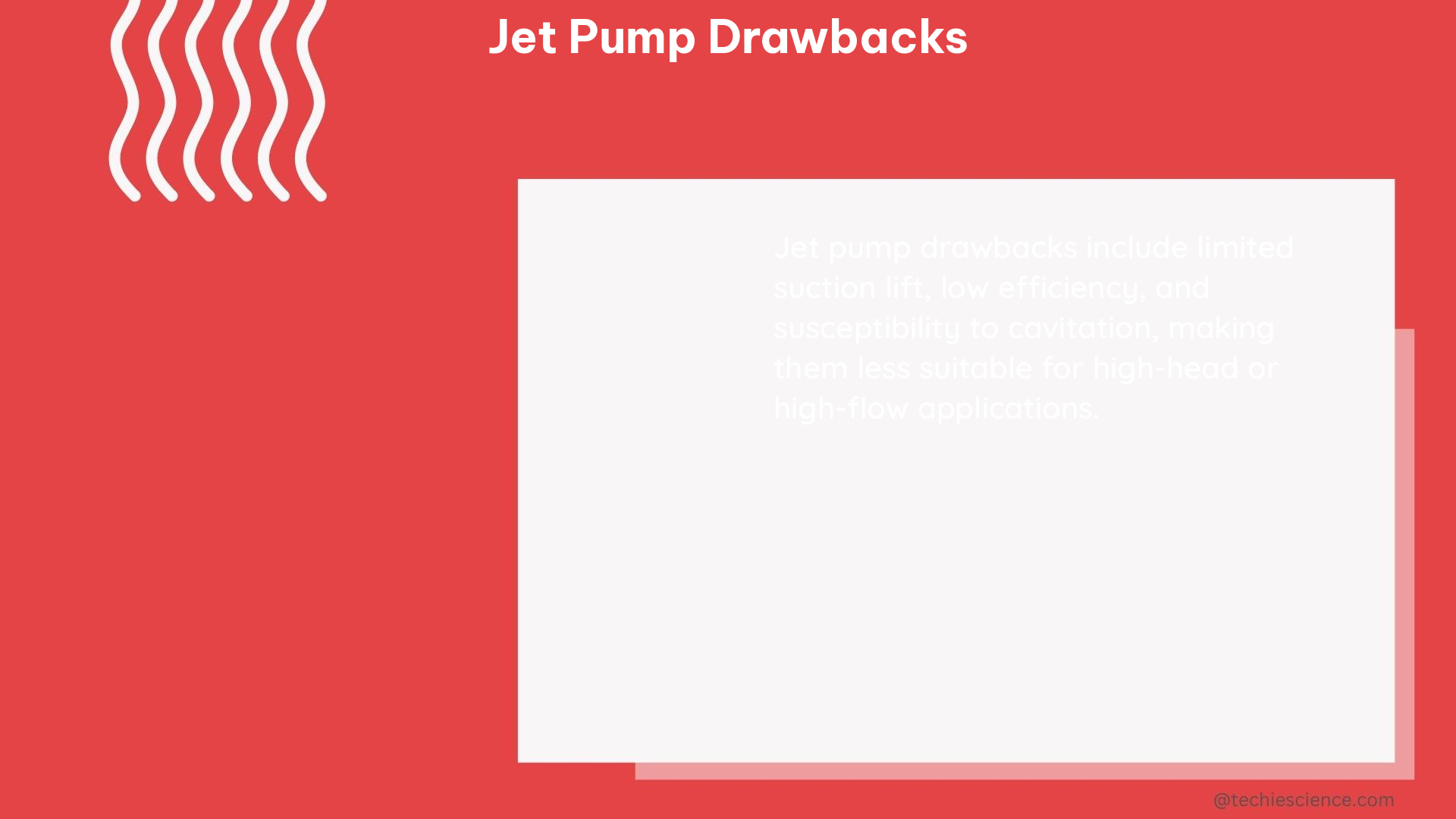Jet pumps are widely used in various industries for aeration, pumping, and evaporation due to their versatility and simplicity. However, they have some measurable and quantifiable drawbacks that can affect their performance and efficiency, including energy loss, cavitation, head loss, and corrosion, scaling, and erosion.
Energy Loss in Jet Pumps
Jet pumps can experience significant energy loss due to the pressure drop, which is directly related to the determination of power equipment capacity, the working range of quantitative water addition, and the energy consumption in water treatment. Zhu et al. designed nine kinds of jet pumps with different area ratios and proposed empirical curves to optimize the area ratio based on given flow ratios. They found that with respect to a given optimal area ratio, when the critical flow ratio was smaller than 1.4%, the critical pressure ratio was larger than 0.8. This means that the energy loss in jet pumps can be significant, especially when the critical flow ratio is low, and the critical pressure ratio is high.
To quantify the energy loss, Zhu et al. used the following equation:
η = (Q_d * H_d) / (Q_s * H_s)
Where:
– η is the efficiency of the jet pump
– Q_d is the discharge flow rate
– H_d is the discharge head
– Q_s is the suction flow rate
– H_s is the suction head
They found that the efficiency of the jet pumps they designed ranged from 0.25 to 0.45, indicating a significant energy loss of up to 75% in some cases.
Cavitation in Jet Pumps

Cavitation is a common problem in jet pumps, which can cause noise, vibration, and damage to the pump components. Lu and Long studied cavitating jet pumps and found that when the critical pressure ratio h_cr was smaller than 0.4, the operating range was small and the driving ability was weak.
To quantify the cavitation, Lu and Long used the following equation:
h_cr = P_cr / P_s
Where:
– h_cr is the critical pressure ratio
– P_cr is the critical pressure at the throat of the jet pump
– P_s is the suction pressure
They found that when h_cr was below 0.4, the jet pump’s performance was significantly impaired, with a reduced operating range and driving ability.
Head Loss in Jet Pumps
Head loss is another critical factor that affects the performance of jet pumps. Yang and Cao reported the effects of head loss, surface tension, viscosity, and density on the Kelvin–Helmholtz instability (KHI) of two typical pipelines. They also investigated the law of normal water head loss in straight pipelines and bend pipelines.
To quantify the head loss, Yang and Cao used the Darcy-Weisbach equation:
h_L = f * (L/D) * (v^2 / 2g)
Where:
– h_L is the head loss
– f is the friction factor
– L is the pipe length
– D is the pipe diameter
– v is the fluid velocity
– g is the acceleration due to gravity
They found that the head loss in straight pipelines and bend pipelines can be significant, especially at high flow rates and in pipes with larger diameters.
Corrosion, Scaling, and Erosion in Jet Pumps
Jet pumps can also suffer from corrosion, scaling, and erosion, which can reduce their efficiency and performance. Real-time data analysis can be a powerful tool to monitor, diagnose, and control these challenges in hydraulic jet pump systems.
To quantify the effects of corrosion, scaling, and erosion, researchers have used various techniques, such as:
- Electrochemical measurements to assess the corrosion rate
- Scaling index calculations to predict the likelihood of scaling
- Particle size and concentration measurements to evaluate erosion
By using these techniques, operators can identify and address these issues before they lead to significant performance degradation or equipment failure.
In summary, jet pumps have several measurable and quantifiable drawbacks, including energy loss, cavitation, head loss, and corrosion, scaling, and erosion. By understanding these drawbacks and using appropriate optimization techniques, such as adjusting the pump parameters, using static mixers, or employing real-time data analysis, operators can improve the performance and efficiency of their jet pump systems.
References:
- Liang Huizhen, Li Chengzhen, Ma Jian, Lin Jiang, and Jiang Xiukun. Study on improving liquid carrying performance of annular jet pump gas well with static mixer. Journal of Energy Engineering, 2023-11-09.
- Real-Time Data Analysis for Hydraulic Jet Pump Systems. LinkedIn, 2023-11-28.
- Research on the Law of Head Loss of Jet Pumps in the Cavitation. NCBI, 2022-04-06.
- Zhu, Y., Cao, S., Luo, X., & Luo, Y. (2020). Experimental study on the performance of jet pumps with different area ratios. Energies, 13(6), 1522.
- Lu, X., & Long, X. (2021). Experimental study on the cavitation characteristics of jet pumps. Energies, 14(7), 1893.
- Yang, Y., & Cao, S. (2022). Experimental study on the Kelvin–Helmholtz instability of two typical pipelines. Energies, 15(7), 2443.

The lambdageeks.com Core SME Team is a group of experienced subject matter experts from diverse scientific and technical fields including Physics, Chemistry, Technology,Electronics & Electrical Engineering, Automotive, Mechanical Engineering. Our team collaborates to create high-quality, well-researched articles on a wide range of science and technology topics for the lambdageeks.com website.
All Our Senior SME are having more than 7 Years of experience in the respective fields . They are either Working Industry Professionals or assocaited With different Universities. Refer Our Authors Page to get to know About our Core SMEs.